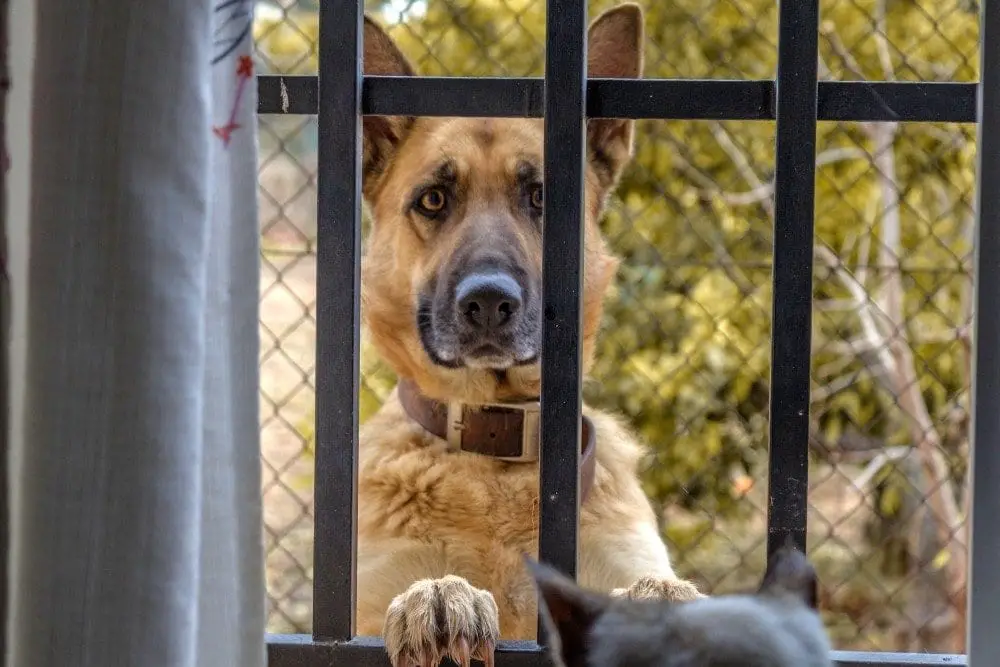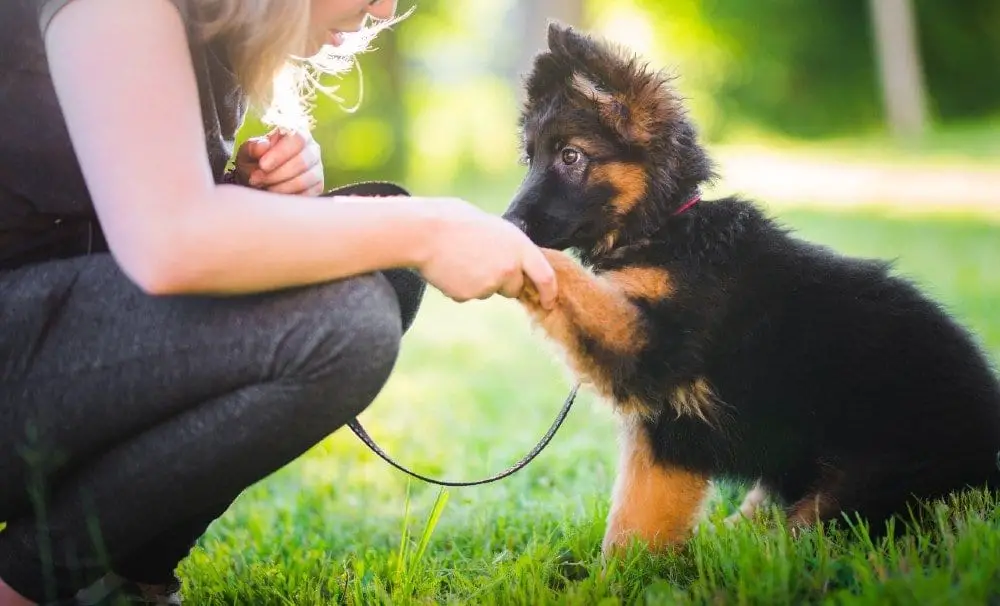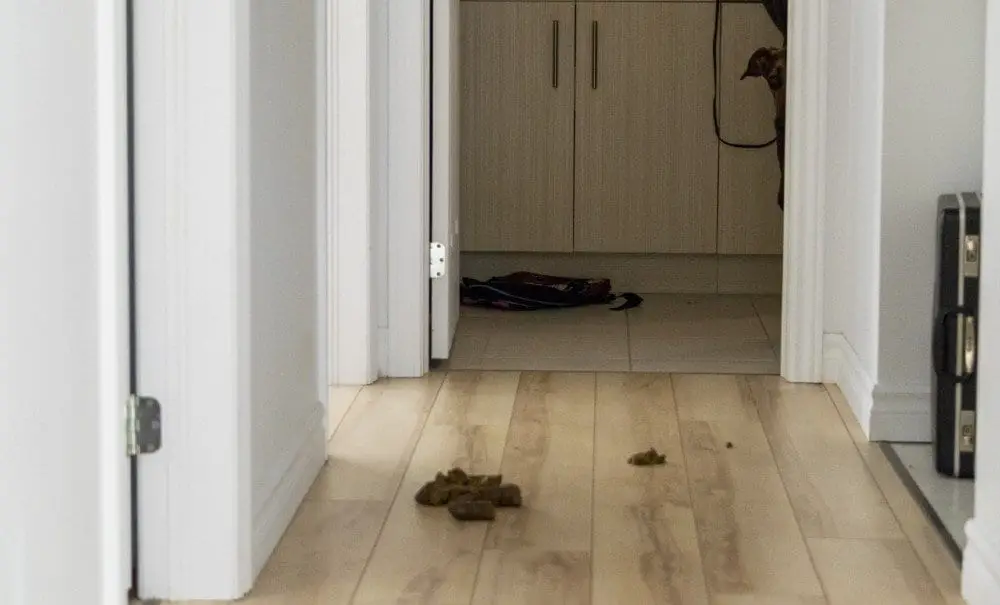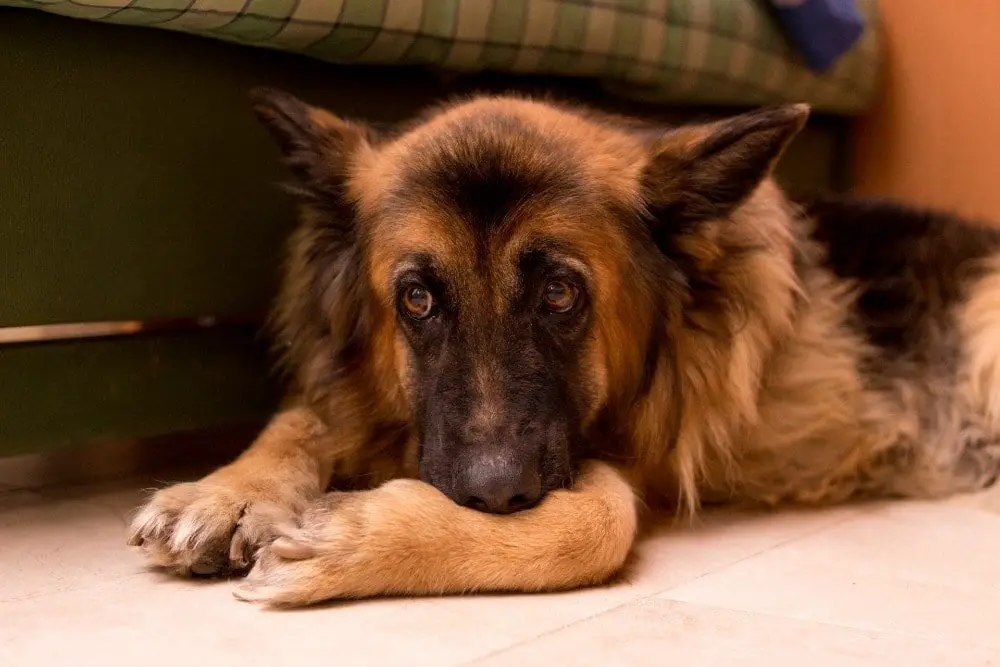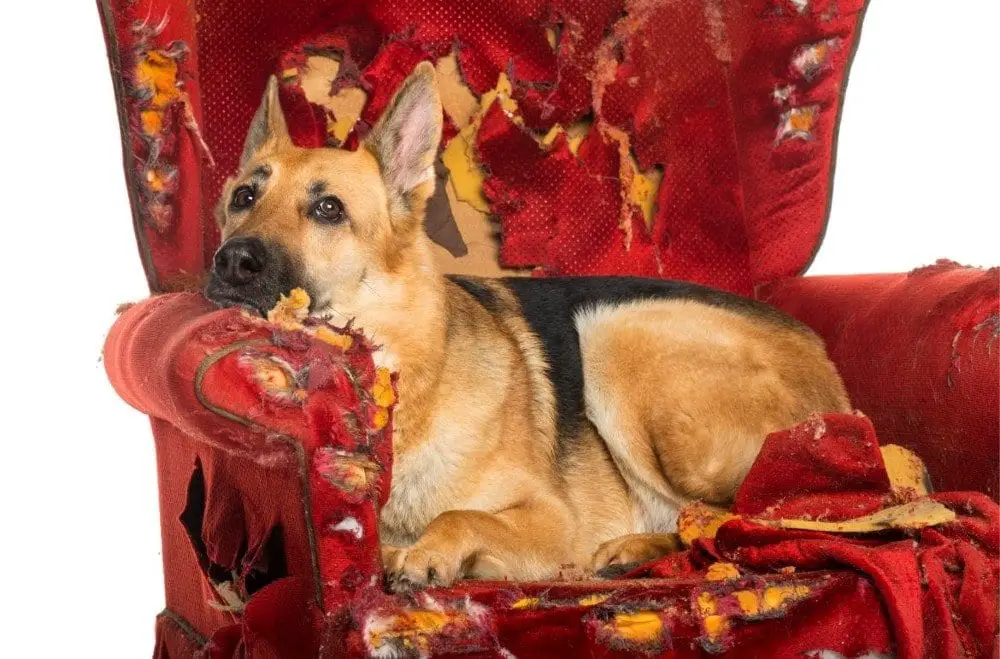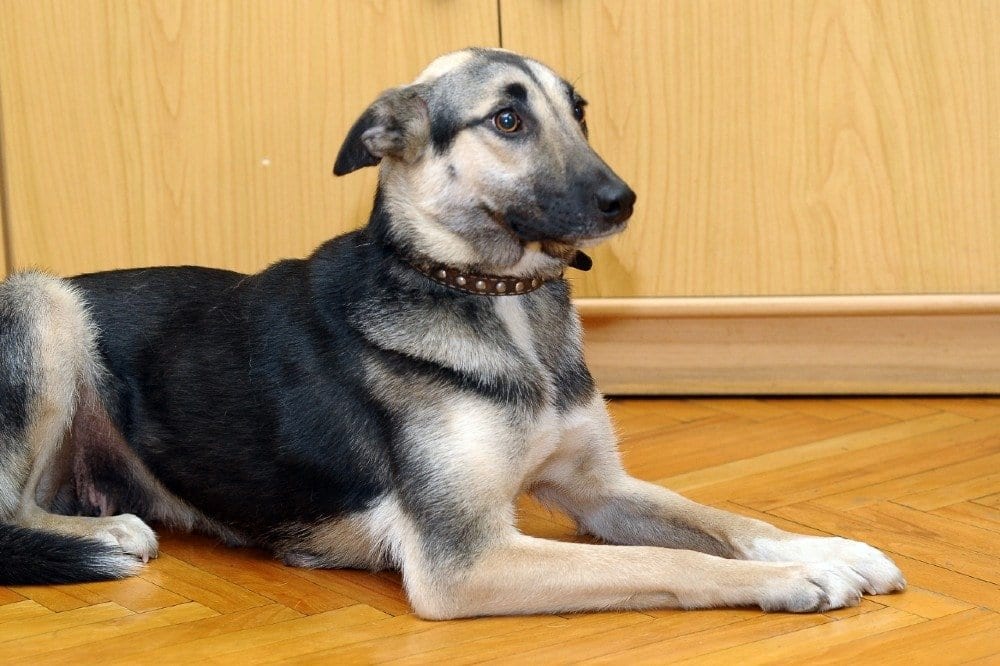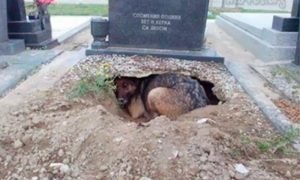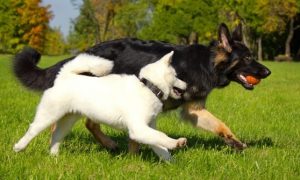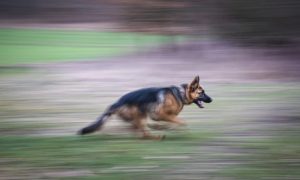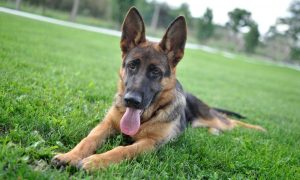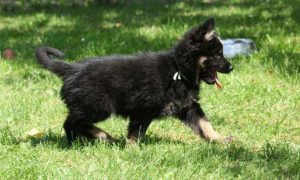Some dogs are more prone to anxiety than others simply due to upbringing and environment.
Like people, dogs are unique in personality and temperament.
Some dogs are just more sensitive, docile, fearful, or anxious regardless of external factors.
Causes of Anxiety in Dogs
Lack of proper socialization and exposure as a puppy to other animals, people, places, things, and loud noises.
Proper socialization at a young age shapes a more confident adult dog.
A traumatic experience, such as neglect, abuse, abandonment, or being attacked by other dogs or animals.
Illness, pain, disease, and aging can lead to behavioral problems and anxiety.
11 Signs of Dog Anxiety
1. Trembling
Your dog physically vibrates or shakes.
2. Tail tucked
Your dog’s tail is between their legs. Curly-tailed dogs will have their tail straight or down.
3. Relieving Themselves in the House and Diarrhea
Separation anxiety can cause housebroken dogs to get worked up to the point they urinate, defecate, or have diarrhea in the house.
4. Becoming Withdrawn, Depressed, or Hiding
Anxiety is a form of stress, and stress can cause a dog to shut down physically.
An anxious dog may remove themselves from a stressful situation by seeking out a quiet, secluded spot.
Withdrawn and depressed symptoms include loss of appetite, excessive sleeping, no longer interested in play, or interactions that they previously enjoyed or looked forward to.
5. Pacing, Restlessness, or Excessive Panting
The opposite behavior of a dog shutting down is a dog that has nervous energy.
6. Licking, Chewing, and Biting Themselves
These symptoms are self-inflicted destructive behaviors.
7. Excessive Barking
Barking is a coping mechanism to physically relieve the stress caused by anxiety.
8. Excessive Whining
Excessive whining is the same outcome as excessive barking.
9. Destructive Behavior
Destructive behavior is most commonly associated with separation anxiety.
Anything accessible could be a target of destruction, including landscaping, furniture, clothing items, flooring, walls, doors, etc. Damage is often found at entry and exit points.
10. Escape Behaviors
Dogs can become overwhelmed with external noise or separation anxiety and become determined to escape their surroundings.
Escape tactics can result in going through windows, chewing through doors, breaking out of crates and climbing fences, or digging out of secure yards.
11. Aggressiveness
Aggressiveness is the most severe and dangerous sign of dog anxiety.
When a dog is anxious and resorts to aggressive behavior, it is essential to understand that the action stems from fear.
A dog displaying aggression out of fear is not motivated to protect their owner or surroundings; they are showing aggression to defend themselves.
How to Help Your Dog’s Anxiety
As an owner, it is essential to learn to read your dog’s body language. This can help you avoid a negative situation and make you aware of what triggers anxiety in your dog.
If medical conditions are ruled out as a cause of anxiety, work on building your dog’s confidence gradually over time with positive reinforcement.
Building your dog’s confidence can be accomplished through play, obedience, exercise, and exposure to new things.
Ignore unwanted behavior and reward desired behavior with positive reinforcement such as verbal praise, physical affection, food, and play.
Separation anxiety is hard to cure, but there are actions you can take to make it easier for both you and your dog.
- Place your dog in a secure area where they are unable to implement destructive behavior or escape.
- Leave your dog alone, by themselves, for short increments while you are out of sight nearby. Ignore whining, barking, crying, etc.
- This starts to break the codependency your dog has on you and the fear that you are leaving them and never coming back. You haven’t abandoned them; you have merely gone into another room.
- Build on the above step by leaving your house, or pretending to leave, for short increments like 5 to 10 minutes. Gradually expand the time your dog home alone.
- Keep departures and returns low key. No heartfelt goodbye’s every time you leave and don’t gush about missing your baby upon your return.
If your dog becomes anxious in certain situations, avoid those situations if possible. For example, your dog is fearful of loud noises, keep the volume low when watching action movies that have sirens, gunfire, etc.
If your dog’s anxiety is severe or circumstantial (i.e., 4th of July fireworks or car rides), look into holistic remedies, CBD oil, or make an appointment with your veterinarian to discuss prescription medications.

